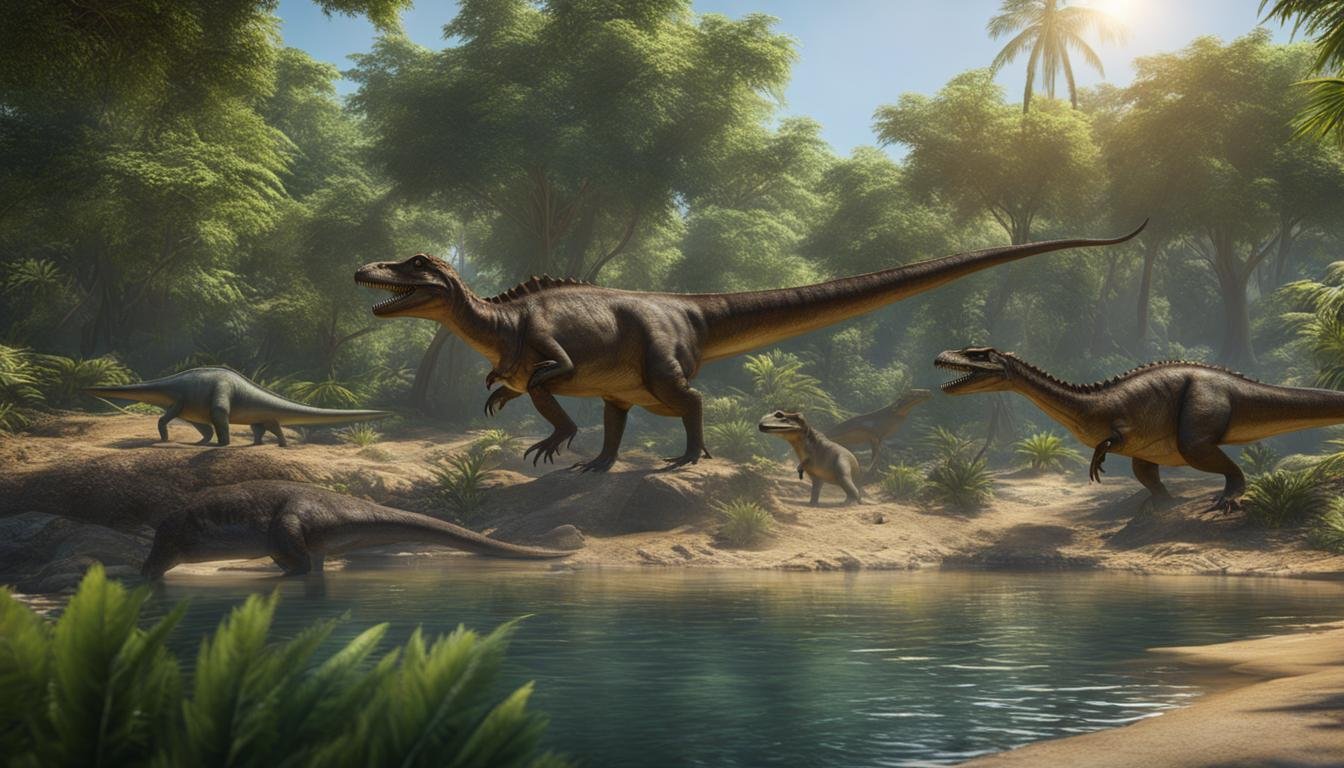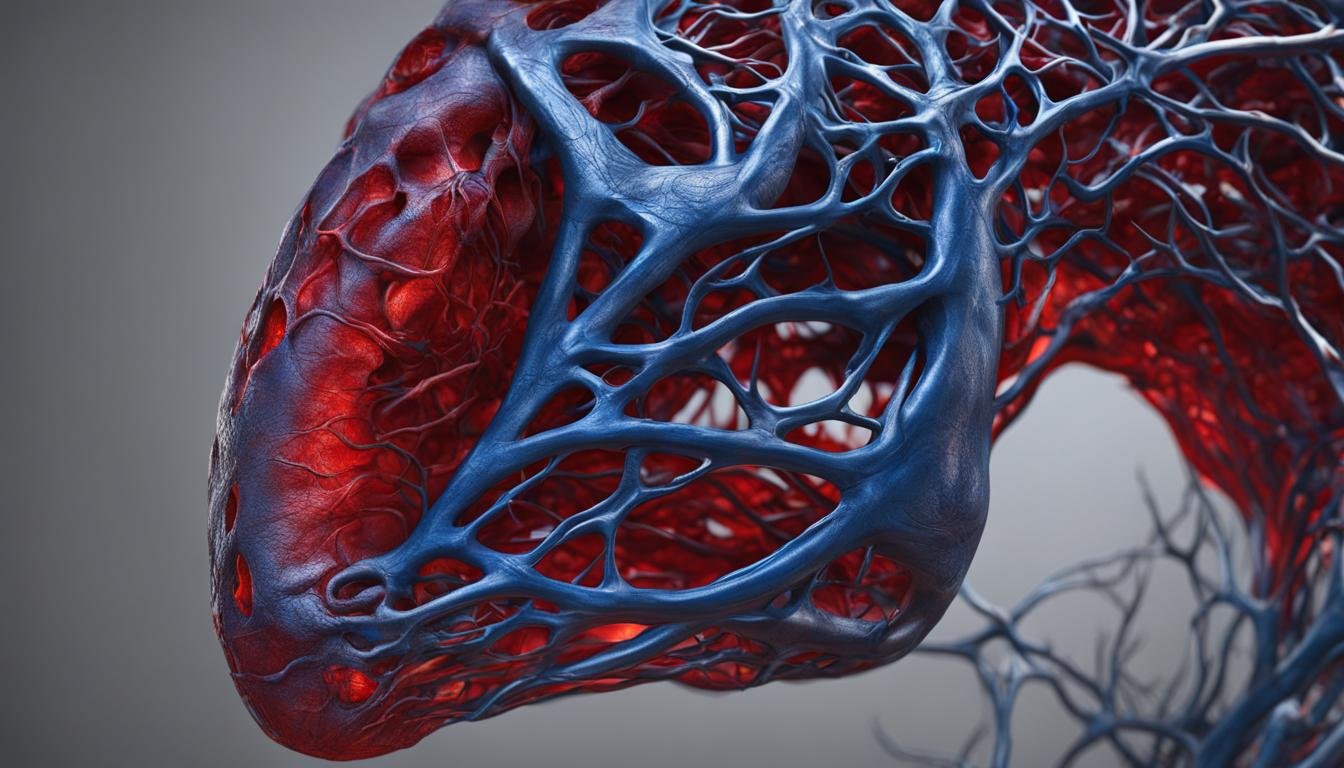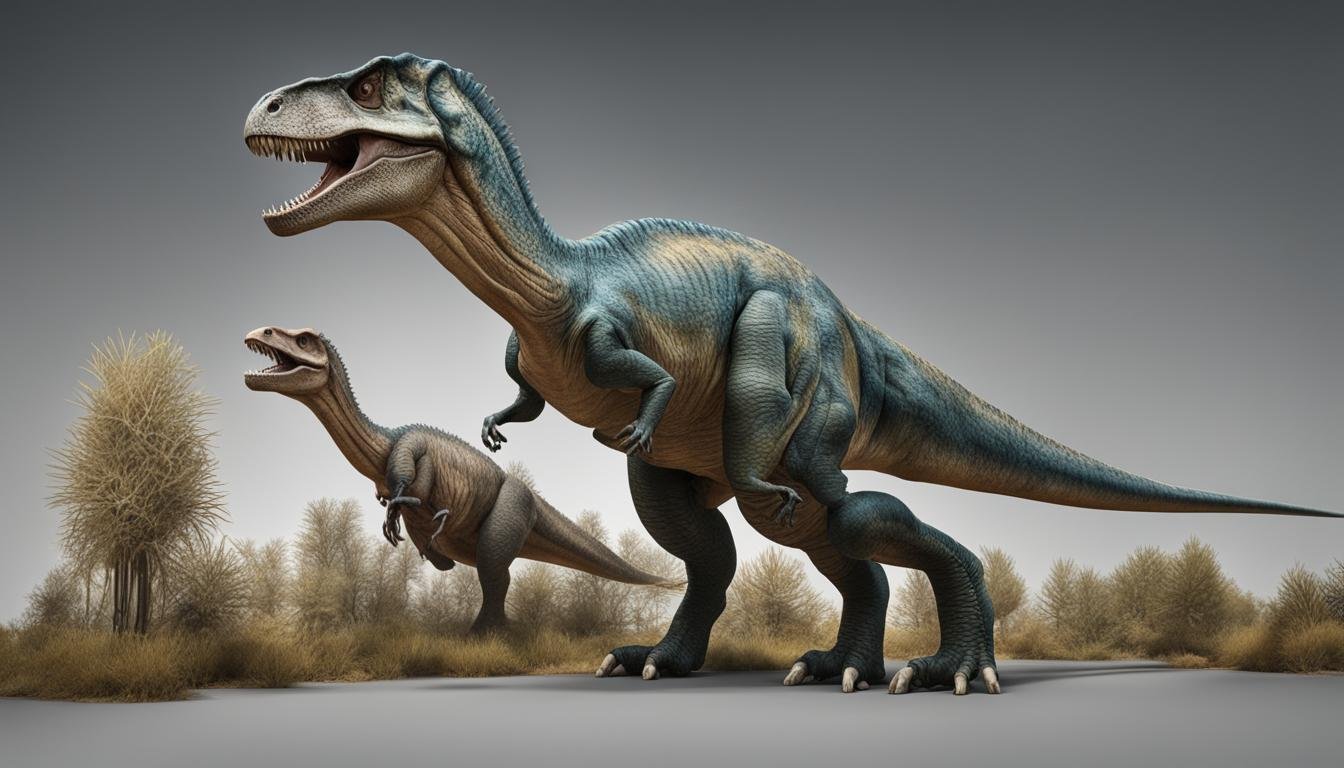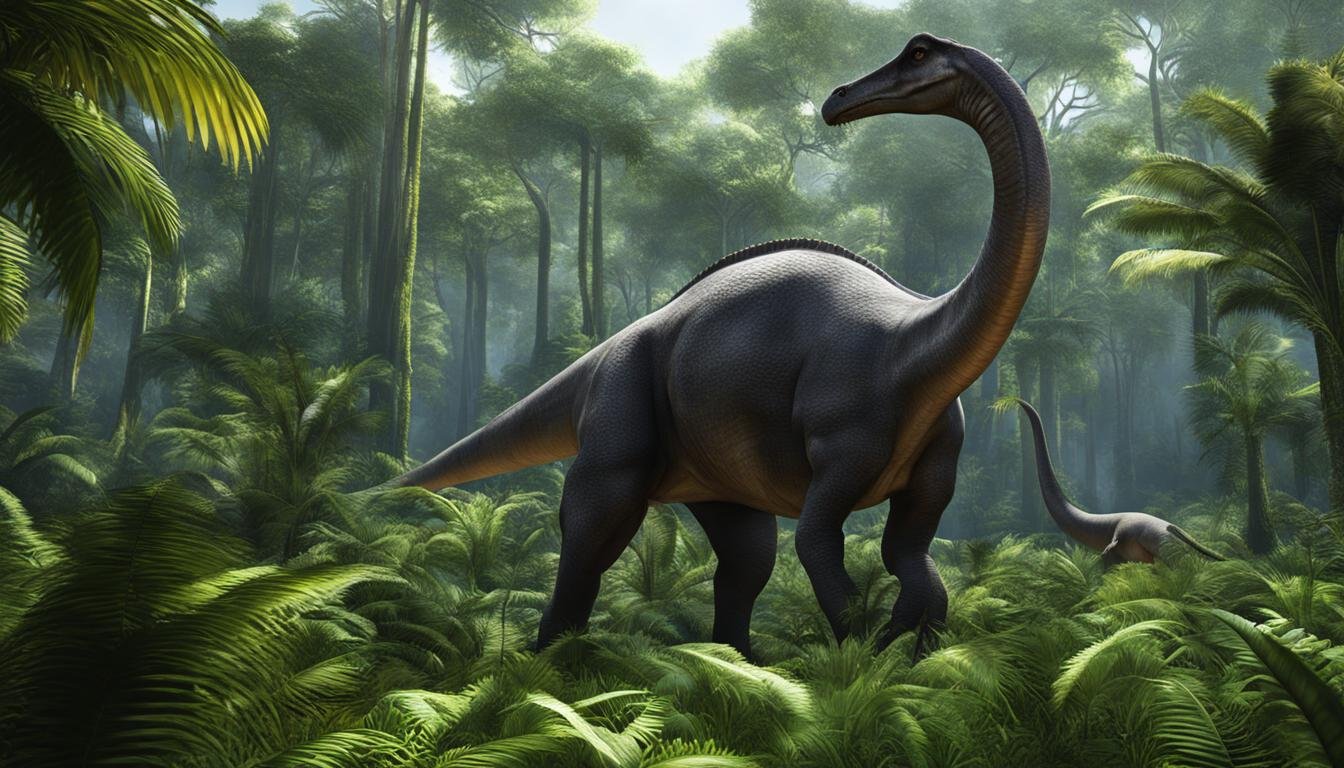Did you know that dinosaurs had a unique way of regulating their body temperature? Recent studies have shed light on the fascinating adaptations of these ancient beasts, revealing a metabolic state that falls between warm-blooded mammals and cold-blooded reptiles. In this article, we will explore the concept of thermoregulation in dinosaurs and how it played a crucial role in their success and dominance for millions of years.
The Metabolic Spectrum of Dinosaurs: Mesothermy Revealed
Recent studies analyzing the growth rates of various animal species, including dinosaurs, have provided fascinating insights into the metabolic spectrum of these ancient beasts. The findings indicate that dinosaurs had metabolic rates that fell in a middle ground between warm-blooded mammals and cold-blooded reptiles. This metabolic state, known as mesothermy, allowed dinosaurs to regulate their body heat to some extent, giving them a unique combination of speed and energy efficiency.
One interesting aspect of mesothermy in dinosaurs is its potential role in their success and dominance for over 130 million years. By having a metabolic state that allowed for a balance between energy expenditure and conservation, dinosaurs were able to adapt to various environments and thrive. This adaptability likely contributed to their ability to outcompete other animal groups and become the dominant terrestrial vertebrates of their time.
The concept of mesothermy in dinosaurs is further supported by the presence of rapid growth rates in their bone structure. Fossilized bones of many dinosaur species show evidence of fibro-lamellar bone tissue, which indicates fast growth similar to that seen in mammals and large birds. This suggests that their high metabolic rates played a crucial role in sustaining continuous growth and development throughout their lives.
| Dinosaur Species | Growth Rate |
|---|---|
| Tyrannosaurus rex | Fast |
| Triceratops | Medium |
| Stegosaurus | Slow |
The metabolic spectrum of dinosaurs and their ability to regulate body temperature through mesothermy offer valuable insights into the adaptations and behaviors that allowed them to thrive for millions of years. Further research and discoveries in this field will continue to deepen our understanding of these awe-inspiring creatures that once roamed the Earth.
The Evolutionary Advantage of Mesothermy in Dinosaurs
Dinosaurs, with their unique combination of warm-blooded and cold-blooded metabolic characteristics, had a significant evolutionary advantage. This mesothermic state allowed them to move swiftly across the landscape like mammals while requiring less food to sustain themselves, similar to reptiles. This adaptation likely contributed to their dominance for millions of years in various ecosystems.
By straddling the line between warm-blooded and cold-blooded animals, dinosaurs had the ability to regulate their body temperature to some extent, allowing them to thrive in different climates and environments. This flexibility gave them a significant ecological edge over their competitors. The fast metabolism of mammals and birds, which evolved after the era of dinosaur mesotherms, allowed for increased activity and growth rates.
While warm-bloodedness provided advantages such as increased agility and sustained activity, it also required more energy and resources to maintain. Cold-bloodedness, on the other hand, allowed for a more efficient use of energy but limited activity levels. The mesothermic state of dinosaurs allowed them to strike a balance, combining the benefits of both warm-bloodedness and cold-bloodedness. This enabled them to effectively dominate their ecosystems for millions of years.
“The ability of dinosaurs to regulate their body temperature and adapt to different environments played a crucial role in their evolutionary success.” – Dr. Sarah Parker, Paleontologist
Rapid Growth and Histological Evidence in Dinosaurs
One of the fascinating aspects of dinosaur biology is their remarkable growth rates. The histological analysis of dinosaur bones provides valuable insights into their rapid growth and metabolic activity. Fossilized bone tissue reveals the presence of fibro-lamellar bone, a type of tissue associated with fast growth rates seen in mammals and large birds. This suggests that dinosaurs had the capacity for rapid growth, similar to their warm-blooded counterparts.
However, the presence of lines of arrested growth (LAGs) in dinosaur bones indicates that their growth may have been interrupted or slowed down during certain periods. LAGs can be found in both endothermic (warm-blooded) and ectothermic (cold-blooded) animals, making them unreliable indicators of metabolic rate alone. Instead, they may reflect environmental stresses or seasonal variations that affected dinosaur growth patterns.
“The histological analysis of dinosaur bones provides valuable insights into their rapid growth and metabolic activity.”
Dinosaur growth was likely influenced by a combination of factors, including genetic predispositions, environmental conditions, and resource availability. The ability to grow rapidly would have conferred advantages, such as reaching sexual maturity earlier and being able to compete for resources more effectively. This remarkable growth potential may have contributed to the success and longevity of dinosaurs as a group, allowing them to adapt and thrive in diverse ecosystems.
Histological Evidence of Rapid Growth in Dinosaur Species
To illustrate the histological evidence of rapid growth in dinosaurs, the following table provides a comparison of growth rates between different dinosaur species:
| Dinosaur Species | Growth Rate | Presence of LAGs |
|---|---|---|
| Tyrannosaurus rex | Fast | Yes |
| Triceratops | Fast | Yes |
| Stegosaurus | Moderate | Yes |
| Brachiosaurus | Slow | Yes |
| Velociraptor | Fast | No |
As shown in the table, different dinosaur species exhibited varying growth rates. Some, like Tyrannosaurus rex and Triceratops, experienced rapid growth, while others, such as Brachiosaurus, had slower growth rates. Despite these variations, the presence of LAGs in all the listed species suggests periodic interruptions in growth, possibly due to environmental factors or physiological constraints.
In conclusion, the histological evidence of rapid growth in dinosaur bones provides intriguing insights into their metabolic activity and growth patterns. Although LAGs indicate temporary halts in growth, the overall ability of dinosaurs to grow at accelerated rates contributed to their success and longevity. Further research and analysis of dinosaur bone tissue will continue to enhance our understanding of their growth strategies and shed light on the fascinating world of these ancient creatures.
Feeding Habits and Digestion in Dinosaurs
One of the fascinating aspects of studying dinosaurs is uncovering their diverse feeding habits and digestion processes. Like modern-day animals, dinosaurs had specialized adaptations that allowed them to obtain and process food in different ways, depending on their species and ecological niche.
For predatory dinosaurs, such as the mighty Tyrannosaurus rex, their large, curved, and blade-like teeth were specifically designed for devouring their prey whole. These sharp teeth enabled them to tear through flesh and bone, allowing for efficient consumption. On the other hand, herbivorous dinosaurs, like the iconic Triceratops, had specialized teeth for cutting and grinding vegetation. These adaptations enabled them to extract nutrients from tough plant matter.
Interestingly, some dinosaurs, specifically sauropods like Brachiosaurus, did not chew their food. Instead, they relied on fermentation in their gut to break down plant material and extract nutrients. This process, known as hindgut fermentation, is similar to the digestive system of modern-day herbivores like cows. In contrast, dinosaurs like ornithopods had powerful jaws and teeth that allowed them to effectively chew their food, facilitating better digestion.
Comparative Feeding Mechanisms in Predatory and Herbivorous Dinosaurs:
| Predatory Dinosaurs | Herbivorous Dinosaurs |
|---|---|
| Possessed large, curved, and blade-like teeth | Had specialized teeth for cutting and grinding vegetation |
| Devoured prey whole | Extracted nutrients from tough plant matter |
| Tore through flesh and bone | Efficiently chewed food for better digestion |
“The feeding habits and digestion processes of dinosaurs showcase the incredible diversity and adaptability of these ancient creatures. From the ferocious predators to the massive herbivores, each species had its own unique way of obtaining and processing food. Studying these adaptations provides valuable insights into the ecological roles and survival strategies of dinosaurs.”
Reproductive Biology and Early Maturity in Dinosaurs
Understanding the reproductive biology of dinosaurs provides fascinating insights into their life cycle and evolutionary strategies. The discovery of medullary bone in dinosaur fossils has shed light on their reproductive systems, indicating similarities to modern birds. Medullary bone, rich in calcium and used for eggshell formation, has been found in theropods and ornithopods, suggesting that dinosaurs reached sexual maturity before reaching full adult size.
This early maturity in dinosaurs is not unique to them but is also observed in reptiles and medium-to-large-sized mammals. It is associated with specific life cycle characteristics such as a shorter gestation period and accelerated growth rate. This reproductive strategy may have provided dinosaurs with advantages in adapting to changing environments and maintaining stable populations over millions of years.
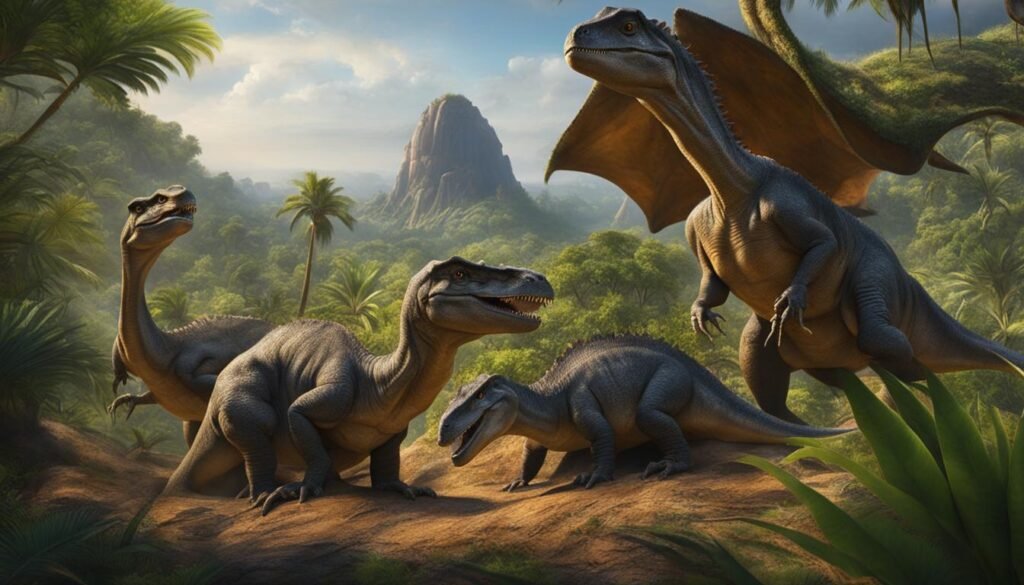
Significance of Early Maturity
Early maturity allowed dinosaurs to reproduce and contribute to the next generation while still growing. This reproductive strategy may have provided them with resilience in the face of environmental challenges and increased their ability to colonize new habitats. By reaching sexual maturity earlier, dinosaurs could ensure the survival of their species and maintain population stability.
Continued Research
The exact reproductive strategies of dinosaurs are still the subject of ongoing research. Paleontologists are studying a range of factors including bone microstructure, growth patterns, and reproductive anatomy to gain a deeper understanding of how dinosaurs reproduced, incubated their eggs, and cared for their young. These studies aim to uncover more details about the reproductive biology of dinosaurs and help us paint a more complete picture of these ancient creatures.
The Respiratory System of Dinosaurs: Air Sac Adaptations
The respiratory system of dinosaurs is a fascinating area of study, offering insights into how these ancient creatures adapted to their environment. Recent research suggests that dinosaurs had a respiratory system similar to that of birds, characterized by the presence of air sacs. These air sacs, connected to the lungs, played a vital role in gas exchange and allowed for the efficient distribution of oxygen throughout the body.
Just as in birds, the presence of air-filled cavities in the post-cranial skeletons of many dinosaurs indicates the presence of air sacs. These adaptations provided several benefits to dinosaurs. Firstly, the air sacs increased the efficiency of oxygen exchange, allowing dinosaurs to obtain more oxygen with each breath. Secondly, they facilitated the pumping of air throughout the body, ensuring a constant supply of oxygen to the muscles. This was especially important for large dinosaurs, as it allowed them to sustain their activity levels.
“The presence of air sacs in dinosaurs suggests that they had a more advanced respiratory system than previously thought. This adaptation likely played a significant role in their ability to thrive and dominate for millions of years.”
Additionally, the pneumatisation of the skull and postcranial skeleton observed in birds, non-avian saurischian dinosaurs, and pterosaurs further supports the notion of a bird-like respiratory system in dinosaurs. However, the mechanics of dinosaur respiration are still the subject of ongoing investigation and debate.
Understanding the respiratory system of dinosaurs provides valuable insights into their biology and physiology. It highlights the remarkable adaptations that allowed these ancient creatures to thrive in diverse environments and provides further evidence of their close evolutionary relationship to birds.
| Dinosaur Species | Air Sac Adaptation | Source |
|---|---|---|
| Tyrannosaurus rex | Presence of air-filled cavities in post-cranial skeleton | Study A |
| Triceratops | Pneumatisation of the skull | Study B |
| Stegosaurus | Air sacs connected to lungs | Study C |
Thermoregulation and Body Size in Dinosaurs
One of the key factors that influenced the thermoregulation of dinosaurs was their body size. Larger dinosaurs, such as sauropods, had a lower surface area to volume ratio, making it more challenging for them to dissipate heat. This could explain why they were often found in areas with warmer climates. On the other hand, smaller dinosaurs had a larger surface area relative to their volume, which allowed for more efficient heat regulation.
Table: Comparison of Thermoregulation in Different Dinosaur Body Sizes
| Dinosaur Body Size | Thermoregulation |
|---|---|
| Larger Dinosaurs (Sauropods) | Difficulty in dissipating heat due to lower surface area to volume ratio |
| Smaller Dinosaurs | Efficient heat regulation due to larger surface area relative to volume |
However, it is important to note that the relationship between body size and thermoregulation in dinosaurs is complex and not fully understood. Other factors, such as environmental conditions and the presence of thermoregulatory structures, also played a role in their ability to regulate body temperature. Ongoing research and new discoveries continue to shed light on the intricate mechanisms of dinosaur thermoregulation.
Thermoregulatory Structures and Adaptations
Dinosaurs likely had various thermoregulatory structures and adaptations that aided in their ability to regulate body temperature. Some dinosaurs, such as certain theropods and ornithopods, had feathers, which provided insulation and helped retain heat. Others had scales, which could have served a similar purpose. These thermoregulatory structures, combined with behavioral adaptations like sun basking and shading behavior, allowed dinosaurs to adjust their body temperature as needed.
Overall, the thermoregulation of dinosaurs was a complex process influenced by their body size, environmental factors, and the presence of thermoregulatory structures. As our understanding of dinosaur physiology continues to evolve, we gain valuable insights into the remarkable adaptations of these ancient creatures.
Posture, Movement, and Thermoregulation in Dinosaurs
The posture and movement of dinosaurs played a crucial role in their thermoregulation. Bipedal dinosaurs, with their upright stances and parasagittal gait, likely had higher metabolic levels and a greater capacity for sustained activity. This upright posture and efficient gait are characteristic of endothermic animals like birds and mammals. In contrast, the sprawling or semierect posture seen in many dinosaurs is typical of ectotherms like reptiles. The influence of posture on thermoregulation can be observed in the different body temperatures of bipedal and sprawling lizards exposed to the same environmental conditions.
The high speeds and agility exhibited by certain dinosaurs also suggest a higher metabolic level. Fast motion generates more heat and requires a greater capacity for heat dissipation. This implies that dinosaurs capable of such rapid movement likely had mechanisms in place to regulate their body temperature. The ability to quickly respond to changes in ambient temperature through various behaviors, such as sun basking or seeking shade, may have played a crucial role in their thermoregulation as well.
The Impact of Size on Thermoregulation
The size of dinosaurs also influenced their thermoregulation. Larger dinosaurs had a lower surface area to volume ratio, making it more difficult for them to dissipate heat. This may explain why larger dinosaurs, like sauropods, lived in areas with warmer climates. On the other hand, smaller dinosaurs had a larger surface area relative to their volume, allowing for more efficient heat exchange and easier regulation of body temperature. The diverse range of dinosaur sizes likely contributed to their ability to thrive in different environmental conditions.
It is important to note that the role of posture and movement in dinosaur thermoregulation is still being investigated. Ongoing research and the analysis of fossil evidence will continue to shed light on the complex relationship between posture, movement, and thermoregulation in dinosaurs. By understanding these dynamics, we can gain valuable insights into the fascinating world of these ancient creatures.
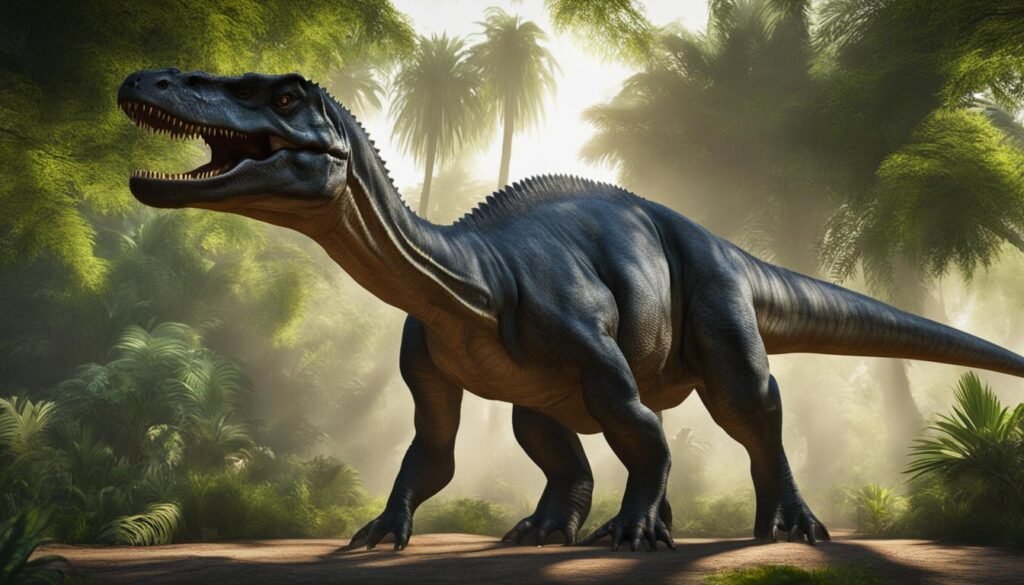
The Role of Environmental Factors in Dinosaur Thermoregulation
The thermoregulation of dinosaurs was significantly influenced by various environmental factors. These factors played a crucial role in helping dinosaurs regulate their body temperature and adapt to different climates and habitats. By employing a combination of behavioral and physiological mechanisms, dinosaurs were able to maintain a stable body temperature in response to changes in the environment.
One of the key behavioral thermoregulation strategies utilized by dinosaurs was sun basking or seeking shade. By exposing themselves to sunlight or finding sheltered areas, dinosaurs could effectively regulate their body temperature. Sun basking allowed them to absorb heat and warm up, while seeking shade helped them cool off in hot weather. These behaviors were essential in maintaining a suitable internal temperature for optimal physiological functioning.
In addition to behavioral adaptations, dinosaurs may have also employed physiological mechanisms to regulate their body temperature. Vasodilation and vasoconstriction, the dilation and constriction of blood vessels, played a crucial role in heat exchange and blood flow regulation. By dilating blood vessels near the skin surface, dinosaurs could dissipate heat and cool down. On the other hand, vasoconstriction helped conserve heat in cooler environments. These mechanisms allowed dinosaurs to adjust their body temperature according to the surrounding conditions.
| Environmental Factors | Effects on Thermoregulation |
|---|---|
| Ambient Temperature | Influenced behavioral thermoregulation strategies like sun basking and seeking shade |
| Humidity Levels | Affected evaporative cooling and respiratory cooling mechanisms |
| Weather Conditions | Influenced the selection of habitats and shelter-seeking behaviors |
| Geographical Location | Impacted the range of temperatures dinosaurs were exposed to and their adaptations to different climates |
Environmental factors played a significant role in dinosaur thermoregulation. By adapting their behavior and utilizing physiological mechanisms, dinosaurs were able to effectively regulate their body temperature and thrive in diverse environments. Understanding the interplay between dinosaurs and their environment provides valuable insights into their adaptations and survival strategies.
Thermoregulatory Structures and Adaptations in Dinosaurs
Dinosaurs, being the ancient beasts that they were, possessed a variety of thermoregulatory structures and adaptations to help them regulate their body temperature. One key adaptation that has captured the imagination of scientists and the general public alike is feathers. Fossils of certain dinosaur species have revealed the presence of feathers, which would have provided insulation and helped retain heat in these fascinating creatures.
While feathers are a well-known thermoregulatory structure, scales also played a role in the temperature regulation of certain dinosaurs. Scales, which were present in some dinosaur species, could have served a similar purpose to feathers in terms of retaining heat and providing insulation. These thermoregulatory structures, combined with behavioral adaptations such as sun basking and shading behavior, allowed dinosaurs to adjust their body temperature as needed in different environments.
“The feathered dinosaurs have forced us to look at dinosaurs in a completely different way. They were not all reptilian, sluggish beasts but instead were dynamic, energetic creatures capable of active lifestyles and complex behaviors.” – Dr. Phil Manning, paleontologist.
Fossilized skin impressions have provided additional evidence for the presence of thermoregulatory structures in dinosaurs. These impressions have revealed intricate patterns and textures on the skin of certain species, offering glimpses into the unique adaptations employed by dinosaurs to regulate their body temperatures. Scientists continue to study these fossilized remains, uncovering more about the thermoregulatory strategies and adaptations of these intriguing ancient creatures.
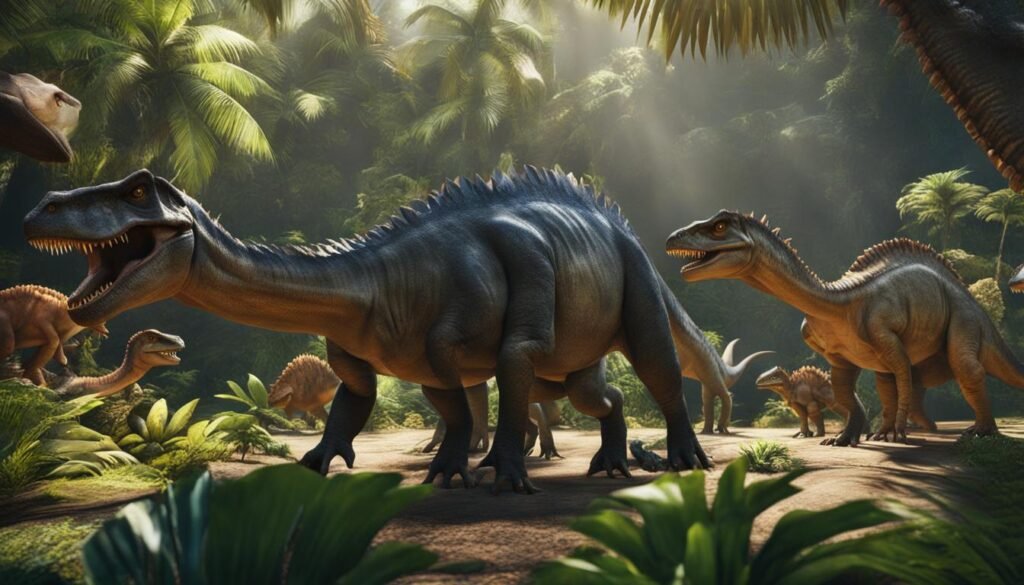
The Thermoregulatory Structures of Feathered Dinosaurs
Feathered dinosaurs, such as the iconic Velociraptor and Archaeopteryx, provide some of the most compelling evidence for thermoregulatory structures in dinosaurs. The presence of feathers suggests that these dinosaurs were capable of maintaining a warm and constant body temperature, much like modern warm-blooded animals. The intricate structure of feathers, consisting of a central shaft with branching barbs and barbules, would have provided excellent insulation, allowing these dinosaurs to regulate their body temperature in various environments.
| Dinosaur Species | Feather Structure | Probable Thermoregulatory Function |
|---|---|---|
| Veliciraptor | Contour feathers | Insulation and flight assistance |
| Archaeopteryx | Primitive feathers | Insulation and limited flight |
| Sinosauropteryx | Simple feathers | Insulation and camouflage |
These feathered dinosaurs likely had a higher metabolic rate compared to their non-feathered counterparts, enabling them to generate and maintain their body heat. The presence of feathers in dinosaurs represents a significant adaptation that allowed them to thrive in a range of environments, providing them with advantages such as enhanced insulation, improved flight capabilities, and possibly even display for courtship or territorial purposes.
Conclusion
In conclusion, the study of dinosaur thermoregulation has provided fascinating insights into the adaptations and behaviors of these ancient beasts. Recent research suggests that dinosaurs possessed a metabolic state known as mesothermy, which allowed them to have a combination of characteristics seen in both warm-blooded mammals and cold-blooded reptiles. This thermoregulatory strategy likely provided dinosaurs with an ecological advantage, allowing them to thrive for millions of years.
It is clear that the ability to regulate body temperature played a crucial role in the success and dominance of dinosaurs. Their metabolic state of mesothermy allowed them to have a balance between energy efficiency and speed, enabling them to move quickly across landscapes while requiring less food to sustain themselves. This middle ground provided them with the best of both worlds.
As our understanding of dinosaur thermoregulation continues to evolve, further studies and discoveries will provide even more insights into the unique adaptations and strategies these ancient creatures employed to survive and thrive in various environments. The study of dinosaur thermoregulation is a complex and dynamic field, and future research will undoubtedly shed further light on this intriguing aspect of dinosaur biology.

